Summary
A PM2.5 filter is a mask insert that can be inserted into the inner pocket of a cloth mask to increase it’s filtering performance. It gets its name from an established standard based on 2.5 micrometers (microns) – equivalent to 0.0025 mm – a reference to the size of airborne particulate matter that this filter is targeted for.
It is made up of five filtration layers, including nonwoven polypropylene, meltblown fabric and a middle layer of activated carbon, that work together to achieve superior filtration performance. Note that no non-medical mask or filter is 100% protective against COVID-19 virus, the use of masks is still encouraged by public health officials in many jurisdictions. While the most recommended type of mask is an N95 mask, they are hard to come by given the increased demand during the pandemic.
They also have to be worn correctly in order for one to gain protection. Most importantly, it is best to free up available supply for those in high risk occupations like front-line medical workers who need these the most. For the rest of us, a cloth mask fitted with a PM2.5 filter is great alternative because it provides better protection than a cloth mask used alone. A PM2.5 filter can also protect us from inhalation of PM2.5 particulate matter that has been shown to have negative health effects.
What is a PM2.5 filter?
PM2.5 is an ISO standard referring to tiny airborne particulate matter that are the less than 2.5 microns (0.0025mm) wide – or 3% the size of human hair. A PM2.5 filter is designed to filter airborne particulate matter smaller than 2.5 microns. ISO describes the efficiency of such filters to be capable of filtering particle sizes in the range of 0.3 microns to 2.5 microns.
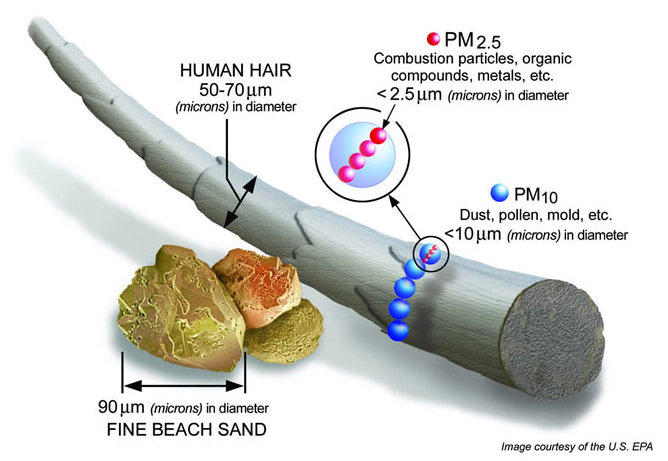
What are PM2.5 filters made of?
The filter consists of five layers of activated carbon filter and different kinds of fabric:
- Layers 1 and 5: Spun-bound polyester material that filters out larger particles
- Layer 3 (middle): activated carbon layer. Traps particulate matter via an adhesion process.
- Layers 2 and 4: high-efficiency melt-blown nonwoven polypropylene that can filter small substances.
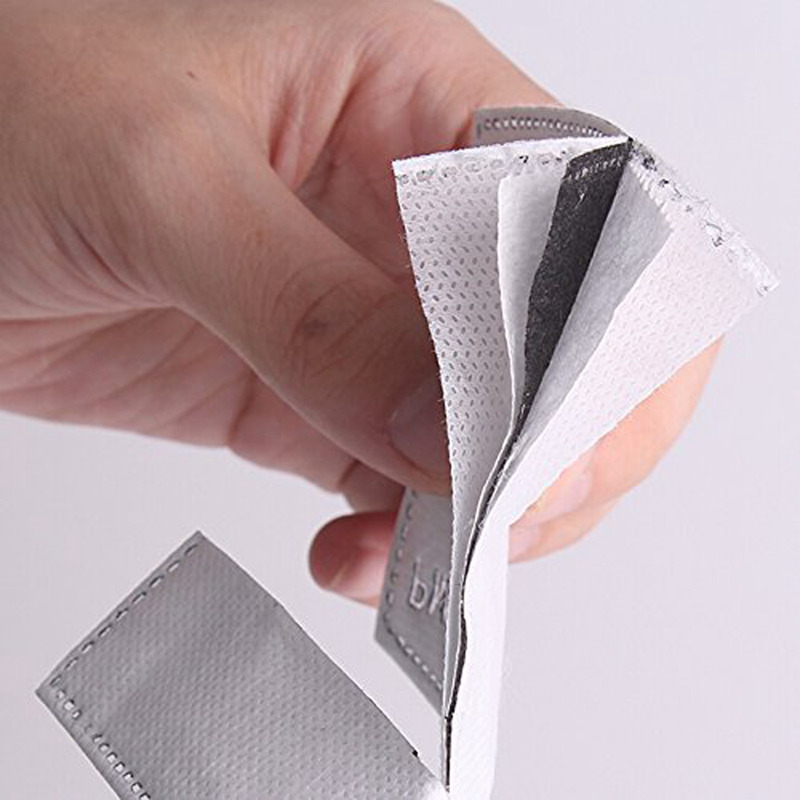
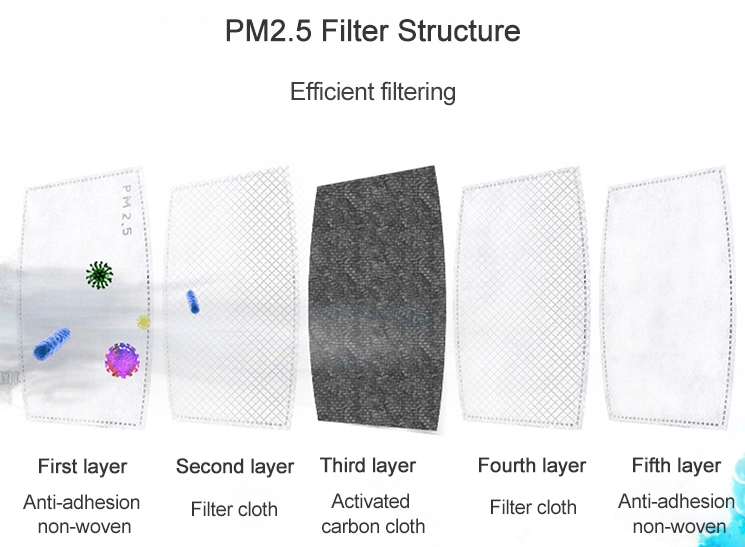
How is a PM2.5 filter used?
It is really simple to use this filter. Simply insert the filter in the inner pocket of your cloth mask!
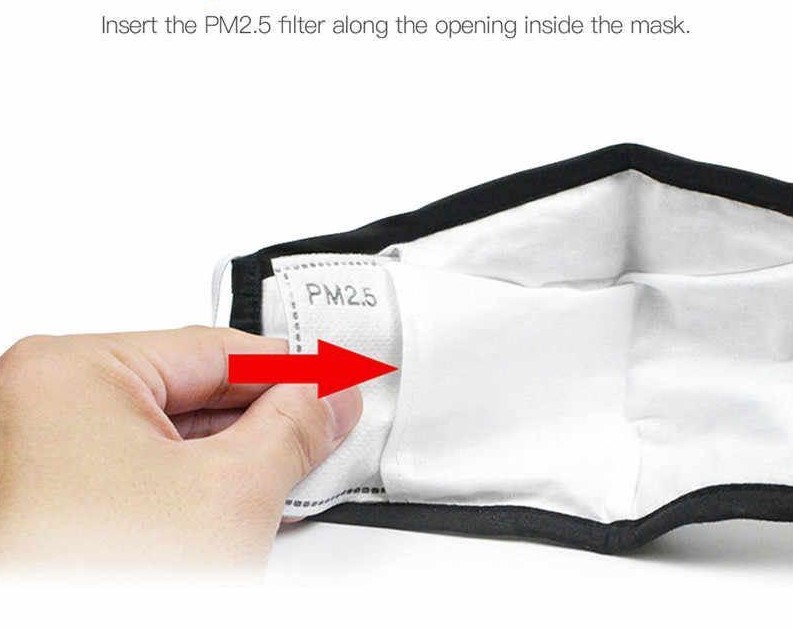
How long will a PM2.5 filter last?
The PM2.5 filter longevity will depend on, of course, how much it is used and the intensity of particulate matter in the environment it is used. In a highly polluted city, or during forest fire haze, it will probably last 3-4 uses due to the higher concentrations of particulate matter.
With respect to our PM2.5 filters, it is recommended that the filter be replaced after a maximum of 12 hours of use. For instance, if you use the filter continuously at work for 8-12 hours in a day, it is recommended that you replace the filter after each single use. If you use the filter occasionally for 1-2 hours at a time, you may be able to reuse the filter more than once, up to a maximum of 12 hours. Given that each filter costs about the price of a cup of coffee, it does not cause consideration damage to your pocket. Another useful rule of thumb is to replace whenever inhalation resistance increases – when it becomes harder to draw a breath, even if the 12-hour maximum use time has not elapsed. This will be especially true in environments with high particulate matter in the air.
How often should a PM2.5 filter be changed?
Ideally after every single use. However, it all depends on your use patterns as indicated above. It is recommended that the filter be replaced after a maximum of 12 hours of use.
What side of PM2.5 Filter faces out?
It does not matter which side of the PM2.5 faces out. The filter is constructed in a symmetrical manner such that regardless of which side faces out, you are always having the same two layers of fabric on either side of the middle carbon-activated layer (see pictures above). However, keep in mind that once used, it is recommended that you always have the same side facing out if you are going to use it multiple times.
Why use a PM2.5 filter?
The best type of mask recommended for use during the COVID-19 pandemic is an N95 mask. These masks are functionally equivalent to KN95 respirators in China and FFP2 respirators in Europe. That is why they are the preferred choice for healthcare workers.
N95 respirators get their name from the fact that they are officially certified by the National Institute for Occupational Safety and Health (NIOSH) to have a 95% minimum efficiency level for trapping airborne particles when properly used.
It would be nice if we all could get one. However, there are three reasons why we can’t and therefore should probably look at other alternatives to N95 masks:
- N95 masks are most-needed in healthcare settings for use by front line healthcare workers who are looking after COVID-19 patients. Given the risk of this work, I think we would all agree that it is best to leave the best equipment, mask to these professionals, as well as others in high risk occupations. There is already a significant shortage worldwide. Those in high risk occupations should get priority on accessing N95 masks produced.
- There is an acute shortage of N95 masks worldwide. Even if you wanted one, chances are it would be difficult to find one. Even if you find one, often times it will be pricey.
- The third reason is: N95 have to be used properly for you to benefit from their protection. Fit testing is key to ensure the mask has a proper closed fit. Healthcare workers actually have to get trained on this in addition to other personal protective equipment. Therefore, it would be something that would be difficult to educate the whole public on. This opens up the risk of someone using these masks having a false sense of security if they are not using the correctly.
PM2.5 filter used together with a cloth mask is therefore a great alternative since it still offers a high degree of filtration performance. In addition, using a PM2.5 filter and cloth mask combination imposes only 25% of inhalation resistance compared to a properly fitted N95 mask – which is typically tight-fitted.
Are there different sizes for PM2.5 filters?
Yes. Our filters come in adult and kid sized variations. The different sizing enables proper fit in both adult and kid-sized masks.

Using a mask outfitted with an effective filter is just one of the ways to minimize the likelihood of spread of COVID-19. This is not a substitute for physical distancing and good hand hygiene. That being said, a PM2.5 filter constructed properly can filter smaller particulate matter up that are less than 2.5 microns up to 0.3 microns. COVID-19 coronavirus particles range in size from 0.01 to 0.14 microns. Therefore you can appreciate how the small size of the virus can theoretically penetrate this filter. In fact most masks! Theoretically.
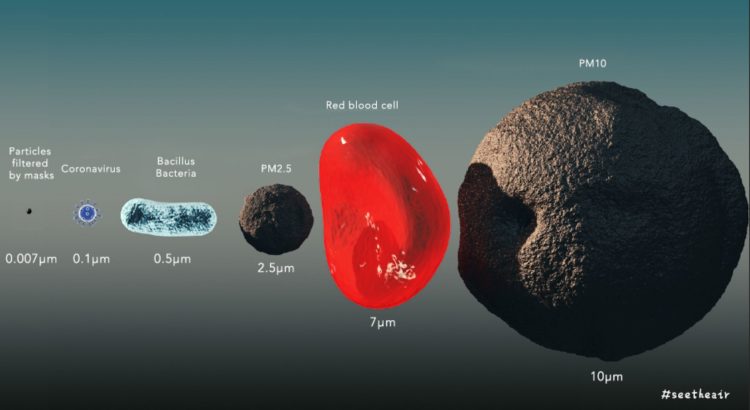
However, it is interesting to note that COVID-19 can be spread through respiratory secretions and aerosols from a cough, sneeze or normal talking. These aerosols (also known as Flügge droplets) will vary in size but can be smaller than 5 microns.
Therefore while the filter cannot 100% protect you from COVID-19, it is capable of trapping larger COVID-19-containing droplets and thus offer some level of protection. Most importantly, the mask used in conjuction with a well-fitted cloth mask will protect others from droplets released by someone infected by COVID-19.
Can I reuse a PM2.5 filter?
It is recommended that PM2.5 filters be used for a maximum of 12 hours. PM2.5 are not washable nor can they be remediated for reuse. Any washing or attempts at cleaning may reduce the performance of the filter.
What are other benefits of PM2.5 filter?
PM2.5 filters are effective against small particulate matter pollution. There is significant scientific evidence about the effect of PM2.5 to our health.
A study published in the Journal of the American Medical Association found that long-term exposure to PM2.5 particles is an environmental risk factor for lung cancer and respiratory mortality. Other studies have also linked exposure to PM2.5 to an increased risk of mortality from cardiovascular disease and increased risk of infant mortality. The Journal of Thoracic Disease published research on the negative effects of PM2.5 on the human respiratory system. Health Canada has published a guidance on PM2.5 in residential indoor air.
The risks of PM2.5 exposure depends on where one lives (e.g. high air pollution in one city compared to the other), indoor habits and one’s overall health. PM2.5 masks are actually quite commonly used in some cities in Asia that has low air quality index due to air pollution.
PM2.5 filters can be useful in significantly reducing exposure to tiny particulate matter. This is even more important for those with allergies, asthma, lung diseases, expectant mothers who want to reduce exposure to environmental toxins, children and the elderly etc.
Where can I get PM2.5 filters for my face mask?
EveryDayMask.ca stocks PM2.5 filters in adult and kid sizes.
Using a mask will not 100% protect you from COVID-19. Rather, masks are more effective in protecting others from those who are infected. It is still important to supplement mask use with proper hand hygiene and physical distancing as recommended by your public health officials.
If you have any questions about PM2.5 filters, please contact us.
Links
- Complete Guide to Filti face mask filters
- What is the difference between PM2.5 and Filti mask filters?
